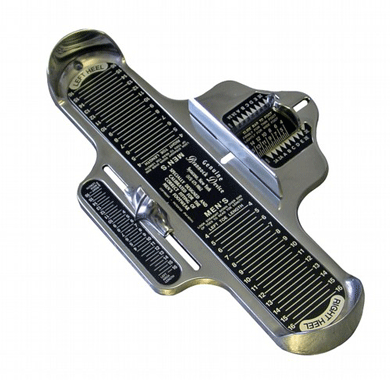- Joined
- Jan 23, 2012
- Messages
- 2,814
http://www.customcoursemaps.com/kaposia-tee-signs/ Notice the circles indicating the distance from the tee to everything.
Those are beautiful! Thanks Steve! :clap:
Discover new ways to elevate your game with the updated DGCourseReview app!
It's entirely free and enhanced with features shaped by user feedback to ensure your best experience on the course. (App Store or Google Play)
http://www.customcoursemaps.com/kaposia-tee-signs/ Notice the circles indicating the distance from the tee to everything.
Actually, a step is about a yard; a pace is two steps. Specifically, the distance from the where the right heel strikes the ground to the next strike. The mile is 5,280 feet because it is 1000 standardized Roman paces. (People were shorter then.) A pace is used because the heel strikes of one foot go in a straight line, while the heel strikes of alternating feet make a somewhat zig zag line.
Uh … nope.
The standardized Roman pace was 5 Roman pedes, roughly 1.48 meters/4'-10.2", so 1000 standardized Roman paces = ~1480 meters/4850'.
The statute mile is 5280' because in 1593 the English Parliament, via the Weights and Measures Act, decreed the English statute mile to be equal to eight furlongs of forty poles, each pole being 16½', in length. (See [/I]Statutes at large from the first year of King Edward the fourth to the end of the reign of Queen Elizabeth. Vol. II. 1763, Act 35, Eliz. I, cap. 6, s.8, p. 676.)
It doesn't fly in a straight line either.The problem with reels is the disc flies through the air, not on the ground -- unless you're throwing a roller.
It doesn't fly in a straight line either.
Also when doing dogleg holes that go around water or impenetrable trees, you're supposed to use the path of the fairway to measure the official distance, not the beeline distance. A laser rangefinder ain't gonna help you there.
OK, well, sure, if you're going to look things up. (Kids today don't know how to rely on vague memories of things they think they heard. Dagnabbit.)
To save some face, from the Encyclopædia Britannica:
"Mile, any of various units of distance, such as the statute mile of 5,280 feet (1.609 km). It originated from the Roman mille passus, or "thousand paces," which measured 5,000 Roman feet."
It doesn't fly in a straight line either.
Also when doing dogleg holes that go around water or impenetrable trees, you're supposed to use the path of the fairway to measure the official distance, not the beeline distance. A laser rangefinder ain't gonna help you there.
Just a general question...if measuring distance do you measure from the tee, around obstacles and such to the basket? Or do you measure as the crow flies, straight from tee to basket in a line.
Par 3's should be straight line since there is intended to be a single shot to reach the green.
Par 4's should be the distance to the intended drive landing spot plus the distance from that point to the center of the green.
As mentioned earlier, if you can give both, that's even better.
Par 3's should be straight line since there is intended to be a single shot to reach the green.
Par 4's should be the distance to the intended drive landing spot plus the distance from that point to the center of the green.

That's how ball golfers complete a ball golf hole. The same idea doesn't apply to a disc golf hole since a scratch disc golfer in most cases will only need one putt once they've reached the so called "green".
What does that have to do with how long the hole is?